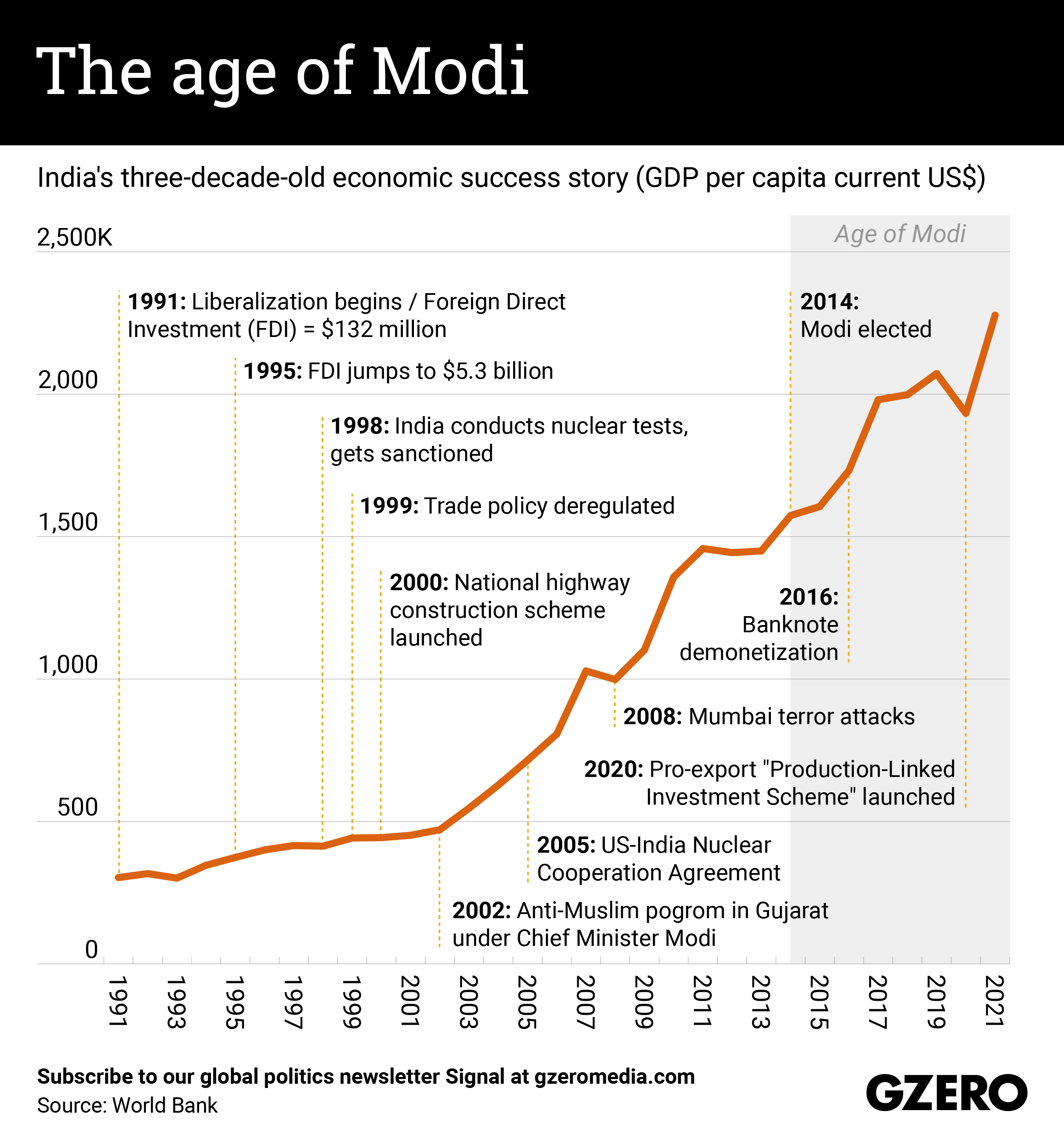December 11, 2022
India, now the fastest-growing major economy on the planet, is expected to become the world’s third-largest by 2027. But this wasn’t always the case. After independence in 1948, India’s closed markets and notoriously red-taped “License Raj” kept growth and foreign investment at bay until financial reforms were passed in 1991. From thereon, growth has accelerated. Despite a change of hands between the two major parties — the Congress and the BJP — financial and market reforms have continued consistently without any significant rollbacks. Today, PM Narendra Modi continues previously planned policies of privatization and digitization, with an emphasis on export incentives, to keep driving the Indian economy moving forward. The lesson? Consistency is key. We explore the big milestones and hiccups in the last 30 years of Indian economic growth.
More For You
Nearly four years into Russia's invasion of Ukraine, the push to end the war is intensifying. The past few weeks produced not one but two proposals.
Most Popular
Sponsored posts
The AI economy takes shape
What's Good Wednesdays
What’s Good Wednesdays™, December 3, 2025
Walmart sponsored posts
Walmart's $350 billion commitment to American jobs
- YouTube
Ian Bremmer breaks down why the latest Russia-Ukraine “peace push” is headed back to Moscow and why the outlook is bleak.
Luis Fernando Cerimedo, advisor of Presidential candidate Nasry Asfura of the National Party of Honduras (PN), speaks during a press conference after the general election, in Tegucigalpa, Honduras, December 1, 2025.
REUTERS/Jose Cabezas
There are close presidential races, and then there’s the one in Honduras, where just 515 votes separate the top two candidates following Sunday’s election in the Central American nation.
© 2025 GZERO Media. All Rights Reserved | A Eurasia Group media company.
